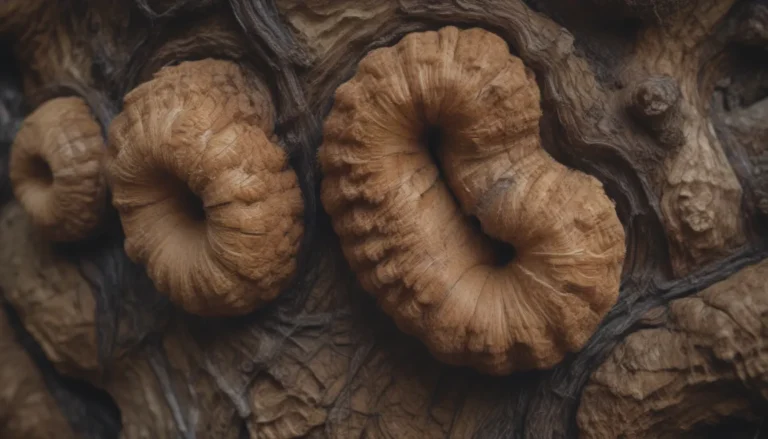The Ultimate Guide to Growing and Caring for Peppermint Plants

Peppermint, also known as Mentha x piperita, is a beloved herb with a long history of use in rituals, culinary dishes, and medicine. This aromatic herb is not only delightful to the senses but also comes with a plethora of benefits. Whether you’re a seasoned gardener or a beginner looking to add some greenery to your space, growing peppermint is a rewarding experience that can be easily achieved with a few simple tips and tricks.
Discovering the Origins of Peppermint
Originally thought to be its own species, peppermint is now known to be a hybrid between spearmint (Mentha spicata) and watermint (Mentha aquatica). This unique blend of botanical genetics gives peppermint its distinctive aroma and flavor, making it a versatile herb that can be used in various ways.
Why Care for Peppermint?
When it comes to caring for peppermint, you’ll find that it is a relatively low-maintenance plant that thrives with minimal effort. Whether you choose to plant it in your garden or in a container, peppermint will reward you with its vibrant green leaves and refreshing scent. However, it’s essential to be mindful of its invasive nature and take precautions to ensure it doesn’t take over your garden.
Tips for Caring for Peppermint
- Light: Peppermint can grow in full sun, partial shade, or even dappled shade, making it a versatile herb that can adapt to various lighting conditions.
- Soil: Peppermint prefers rich, loamy, and moist soil, but it can thrive in different environments, ranging from trailside ditches to craggy outcrops.
- Water: Keep the soil consistently moist to ensure your peppermint plant remains healthy and flavorsome. Avoid overwatering, as mint plants are sensitive to waterlogged soil.
- Temperature and Humidity: Peppermint is hardy and can survive light frosts, but it thrives in temperatures ranging from 55 to 70 degrees Fahrenheit. Watch out for excessive humidity, which can lead to rapid growth.
- Fertilizer: Avoid using fertilizer on most herbs, including peppermint, as it can lead to excessive growth with less concentrated oils in the leaves and flowers.
Propagating Peppermint Plants
If you want to expand your peppermint collection or share it with friends and family, propagating mint plants is a simple and rewarding process. Mint is known for its ability to propagate easily from cuttings, making it an excellent choice for beginner gardeners.
Steps to Propagate Peppermint
- Take a Cutting: Use sterile scissors to cut a four-inch stem section below a leaf node. Remove the leaves below the node and place the cutting in water in a bright location.
- Root Formation: Wait for roots to develop within a few weeks before transplanting the cutting into a pot filled with potting soil.
- Trim and Transplant: Trim the top of the plant to encourage root growth, then transplant it into a larger pot or garden once it has established a robust root system.
Growing Peppermint from Seeds
For those who prefer to start from scratch, growing peppermint from seeds is a rewarding experience that allows you to witness the plant’s entire lifecycle. With a bit of patience and care, you can cultivate healthy peppermint plants from seedlings.
Steps to Grow Peppermint from Seeds
- Plant the Seeds: Press peppermint seeds onto the surface of seed starting mix, keeping the soil moist until germination occurs within five to ten days.
- Transplanting: Wait until the threat of frost has passed before transplanting seedlings into the garden, spacing them 18 to 24 inches apart for optimal growth.
Potting and Repotting Peppermint Plants
Given peppermint’s aggressive growth habit, planting it in a pot is a smart choice to prevent it from spreading uncontrollably. Choosing a large pot with proper drainage will provide your plant with ample space to thrive while keeping its growth in check.
- Select a Large Pot: Choose a pot with adequate drainage holes to accommodate the vigorous root growth of peppermint plants.
- Maintain Moisture: Ensure the soil is consistently moist but not waterlogged to promote healthy growth and prevent root rot.
- Trim Regularly: To prevent leggy growth, trim container-grown mint plants frequently to maintain a bushy, compact appearance.
Popular Peppermint Cultivars
In addition to traditional peppermint varieties, there are several cultivars of Mentha x piperita that offer unique flavors and aromas. Whether you prefer a hint of chocolate or the soothing scent of lavender, these cultivars can add diversity to your herb garden.
- Mentha x piperita ‘Chocolate Mint’
- Mentha x piperita ‘Citrata’
- Mentha x piperita ‘Crispa’
- Mentha x piperita ‘Lavender Mint’
- Mentha x piperita ‘Lime Mint’
- Mentha x piperita ‘Variegata’
By following these tips and guidelines, you can cultivate a thriving peppermint garden that not only adds beauty to your space but also provides you with a fresh supply of aromatic leaves for cooking, teas, and skincare products. With the right care and attention, your peppermint plants will flourish and reward you with their delightful fragrance and flavor for years to come. Happy gardening!





